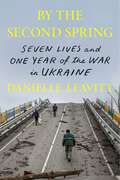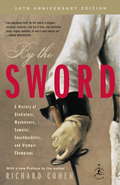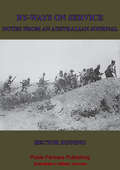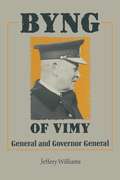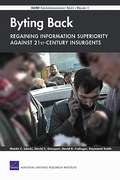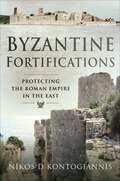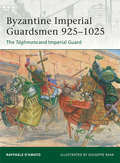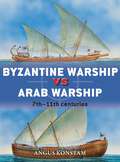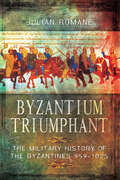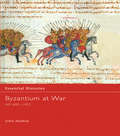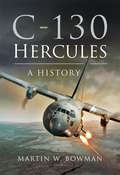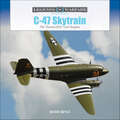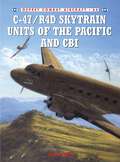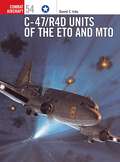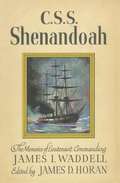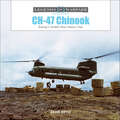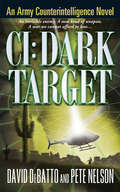- Table View
- List View
By the Rule: from Close Quarters
by Larry HeinemannDraftee Philip Dosier tells the story of his war. Straight from high school, too young to vote or buy himself a drink, he enters a world of mud and heat, blood and body counts, ambushes and firefights. “Then it began—fifties and sixties and frags and AKs and RPGs—down toward the road where the seven-four had parked—frags and claymores and sixteens on auto and more AKs, lots of AKs—on the south side of the laager by Bravo Company and to the east by the grunts.” The inspiration for fellow infantry man Oliver Stone’s Platoon, this unsparing, excerpted chapter from Larry Heinemann’s first novel, Close Quarters, captures the infamous New Years Day Battle of 1968 between the 25th Infantry Division and North Vietnamese Army.A Vintage Shorts Vietnam Selection. An ebook short.
By the Second Spring: Seven Lives and One Year of the War in Ukraine
by Danielle LeavittAn intimate, affecting account of life during wartime, told through the lives that have been shattered.Since Russia’s full-scale invasion of Ukraine in 2022, many Americans have identified deeply with the Ukrainian cause, while others have cast doubt on its relevance to their concerns. Meanwhile, even as scores of Americans rally to the Ukrainian cause and adopt Volodymyr Zelensky as a hero, the lives of Ukrainians remain opaque and mostly anonymous. In By the Second Spring, the historian Danielle Leavitt goes beyond familiar portraits of wartime heroism and victimhood to reveal the human experience of the conflict. An American who grew up in Ukraine, Leavitt draws on her deep familiarity with the country and a unique trove of online diaries to track a diverse group of Ukrainians through the first year of Russia’s full-scale invasion. Among others, we meet Vitaly, whose plans to open a coffee bar in a Kyiv suburb come to naught when the Russian army marches through his town and his apartment building is split in two by a rocket; Anna, who drops out of the police academy and begins a tumultuous relationship with a soldier she meets online; and Polina, a fashion-industry insider who returns home from Los Angeles with her American husband to organize relief. To illuminate the complex resurgence of Ukraine’s national spirit, Leavitt also tells the story of Volodymyr Shovkoshitniy—a nuclear engineer at Chernobyl who went on to lead a daring campaign in the late 1980s to return the bodies of three Ukrainian writers who’d died in a Soviet gulag. Writing with closeness and compassion, Leavitt has given us an interior history of Europe’s largest land war in seventy-five years.
By the Skin of My Teeth: Flying RAF Spitfires and Mustangs in World War II and USAF Sabre Jets in the Korean War
by Colin DownesA career pilot&’s memoir of flying fighter jets through two wars and through the evolution of aviation technology. This is Colin Downes&’s firsthand account of flying with the Royal Air Force in war and peace during a career in military and civil aviation covering a half century. The text is filled with his personal experiences, reminiscences and impressions and is written in four parts. Part One covers the years leading to Downes&’s graduation and the winning of his RAF Wings. This is followed by action-packed stories of flying propeller-driven fighters, Spitfires and Mustangs, during and just after the Second World War. Downes then tells of his unique experiences of front-line fighter operations when he flew jets with the United States Air Force during the Korean War. The final chapter covers the remainder of his RAF Service flying until retirement. By the Skin of My Teeth offers a cockpit view of some of the most pivotal battles of the 20th century and covers decades of technological advancements in aircraft development.
By the Sword
by Richard CohenNapoleon fenced. So did Shakespeare, Karl Marx, Grace Kelly, and President Truman, who would cross swords with his daughter, Margaret, when she came home from school. Lincoln was a canny dueler. Igantius Loyala challenged a man to a duel for denying Christ's divinity (and won). Less successful, but no less enthusiastic, was Mussolini, who would tell his wife he was "off to get spaghetti," their code to avoid alarming the children. By the Sword is an epic history of sword fighting--a science, an art, and, for many, a religion that began at the dawn of civilization in ancient Egypt and has been an obsession for mankind ever since. With wit and insight, Richard Cohen gives us an engrossing history of the world via the sword. With a new Preface by the author.n as he is with the sword."-The New York Times"Irresistible . . . extraordinary . . . vivid and hugely enjoyable."-The Economist"A virtual encyclopedia on the subject of sword fighting."-San Francisco Chronicle"Literate, learned, and, beg pardon, razor-sharp . . . a pleasure for practitioners, and a rewarding entertainment for the armchair swashbuckler."-Kirkus Reviews (starred review)
By-Ways On Active Service; Notes From An Australian Journal
by Captain Hector William DinningIt seems strange that any book should be composed in a war-zone as difficult and dangerous as the Somme area in 1917, but that is exactly what Hector Dinning did. Having published a few of his pen-portraits and sketches of incidents in various journals, friends and colleagues pressed Dinning to collect them together and publish them as a book. This he did even in the mud of the battlefield and under the shell-fire of the Germans!Hector Dinning was among the first Australians to volunteer for overseas service. As he and his comrades sailed toward Egypt, military discipline chafed at the individualism of the Australians. Thankfully, once in Cairo, the troops were allowed leave before further transit to the hellish Gallipoli peninsula. Dinning details the difficulties and carnage that he witnessed at Gallipoli and Pathos, but also with some restraint, given the awfulness of the battles there. After only a brief rest in Egypt, the author was sent to France for further action on the Somme in Picardy; however, as a relief and in stark contrast, he tells of encounters with the French civilians behind the lines and the time that he spent out of the lines. This volume takes his story up to 1917, whereupon he was transferred to the famed Australian Light Horse, who were engaged in Palestine under Allenby, which he recounted in his second volume of memoirs, "Nile to Aleppo, with the Light-horse in the Middle-East."An excellent Anzac memoir.Some contemporary reviews of 'By-Ways On Active Service'"He has a notable literary gift."--Morning Post."He has seen strange things with intensely keen eyes."--Daily Express."He is a vivid writer, with a keen eye for detail, and a direct way of setting it down which grips the attention." Times."He sees things with fresh and observing eyes, and he has a most receptive mind."--Punch."He can write." Sydney Bulletin."He has a striking literary gift."-- Archibald Strong in Melbourne Herald.
Byng of Vimy: General and Governor General
by Jeffery WilliamsField Marshal the Viscount Byng of Vimy did not fit into the conventional mould in the Army, as Governor-General of Canada or as Commissioner of the Metropolitan Police. Few officers commanded more widespread affection from their troops, or knew them and treated them with such respect as he did. Beginning with dramatic reforms in dress and living conditions in his own regiment, the 10th Royal Hussars, Byng consistently watched over the welfare of his men. Following the desperate Ypres battles of 1914-15, he was sent to Gallipoli to revive a failing enterprise, but instead, in the face of Kitchener's and Churchill's opposition, he called for it to be abandoned. He then planned one of the most successful withdrawals in the history of war. Ever seeking ways to win, Byng led the Canadian Corps to the capture of Vimy Ridge, and the Third Army in the first major tank battle at Cambrai, and in 1918 he commanded the largest of Britain's field armies in the final victory campaign. As Governor-General of Canada, he became almost a Canadian nationalist and worked for the unity of the widespread provinces. He advocated the adoption of a Canadian flag and abandonment of the word "Empire". His conception of the role of the Crown in the constitutional crisis of 1926 has led to its position in the Commonwealth today. Finally, at the age of 66 and fighting a wasting illness, he was summoned to reform the Metropolitan Police, which in a remarkably short time he brought into the 20th century. This reissued biography won the Governor-General's Prize in Canada when it was first published.
Byting Back: Regaining Information Superiority Against 21st-Century Insurgents
by Raymond Smith David C. Gompert David R. Frelinger Martin C. LibickiU.S. counterinsurgency efforts in Iraq and Afghanistan have failed to exploit information power, which could be a U.S. advantage but instead is being used advantageously by insurgents. Because insurgency and counterinsurgency involve a battle for the allegiance of a population between a government and an armed opposition movement, the key to exploiting information power is to connect with and learn from the population itself, increasing the effectiveness of both the local government and the U.S. military and civilian services engaged in supporting it. Utilizing mostly available networking technology, the United States could achieve early, affordable, and substantial gains in the effectiveness of counterinsurgency by more open, integrated, and inclusive information networking with the population, local authorities, and coalition partners. The most basic information link with the population would be an information technology (IT)-enhanced, fraud-resistant registry-census. The most promising link would come from utilizing local cell phone networks, which are proliferating even among poor countries. Access to data routinely collected by such networks can form the basis for security services such as enhanced-911 and forensics. The cell phones of a well-wired citizenry can be made tantamount to sensor fields in settled areas. They can link indigenous forces with each other and with U.S. forces without interoperability problems; they can also track the responses of such forces to emergencies. Going further, outfitting weaponry with video cameras would bolster surveillance, provide lessons learned, and guard against operator misconduct. Establishing a national Wiki can help citizens describe their neighborhoods to familiarize U.S. forces with them and can promote accountable service delivery. All such information can improve counterinsurgency operations by making U.S. forces and agencies far better informed than they are at present. The authors argue that today?'s military and intelligence networks-being closed, compartmentalized, controlled by information providers instead of users, and limited to U.S. war fighters-hamper counterinsurgency and deprive the United States of what ought to be a strategic advantage. In contrast, based on a review of 160 requirements for counterinsurgency, the authors call for current networks to be replaced by an integrated counterinsurgency operating network (ICON) linking U.S. and indigenous operators, based on principles of inclusiveness, integration, and user preeminence. Utilizing the proposed ways of gathering information from the population, ICON would improve the timeliness, reliability, and relevance of information, while focusing security restrictions on truly sensitive information. The complexity and sensitivity of counterinsurgency call for vastly better use of IT than has been seen in Iraq and Afghanistan. Here is a practical plan for just that.
Byzantine Fortifications: Protecting the Roman Empire in the East
by Nikos D. KontogiannisThe Byzantine empire was one of the most powerful forces in the Mediterranean and Near East for over a thousand years. Strong military organization, in particular widespread fortifications, was essential for its defense. Yet this aspect of its history is often neglected, and no detailed overview has been published for over thirty years. That is why Nikos Kontogiannis's ambitious account of Byzantine fortifications – their construction and development and their role in times of war – is such a valuable and timely publication. His ambitious study combines the results of decades of wide-ranging archaeological work with an account of the armies, weapons, tactics and defensive strategies of the empire throughout its long history. Fortifications built in every region of the empire are covered, from those in Mesopotamia, Syria and Africa, to those in Asia Minor, the Aegean and the Balkan peninsula. This all-round survey is essential reading and reference for anyone with a special interest in the Byzantine empire and in the wider history of fortification.
Byzantine Imperial Guardsmen 925-1025
by Giuseppe Rava Raffaele D'AmatoThe hundred-year period ending in 1025, from the reign of the Emperor Constantine VII to that of Basil II 'the Bulgar-Slayer', encompassed the last great era of Byzantine aggression and dominance in the Near East and Balkans. During that time, a succession of soldier-emperors challenged and defeated an array of opponents on land and at sea and reconquered vast swathes of territory. At the heart of the Emperors' forces were the professional, highly mobile Tagmata or Imperial Guard regiments, originally formed to guard the Emperor¹s person in the capital but invariably deployed as elite combat troops. Joining these heavy cavalry units, were a variety of exotic mercenary units recruited from foreigners, notably the legendary Varangians. Featuring specially commissioned full-colour artwork, this lively study sheds new light on the colourful regiments of the Byzantine Imperial Guard, the formidable warriors who provided the Byzantine emperors with an insurance policy in the capital, and the elite of their field armies when on campaign.
Byzantine Warfare (The International Library of Essays on Military History)
by John HaldonWarfare was an integral part of the operations of the medieval eastern Roman, or Byzantine, Empire, both in its organization, as well as in social thinking and political ideology. This volume presents a selection of articles dealing with key aspects of Byzantine attitudes to war and violence, with military administration and organization at tactical and strategic levels, weapons and armaments and war-making itself; discussions which make an important contribution to answering the questions of how and why the empire survived as long as it did.
Byzantine Warship vs Arab Warship
by Angus KonstamThis engaging study pits the the Byzantine dromōn against the Arabic shalandī in the prolonged struggle for mastery in the Mediterranean in the four centuries after 630 AD.For four hundred years the Byzantine Empire's naval forces vied with the warships of the Islamic world for mastery of the Mediterranean. At the heart of this confrontation were the fighting vessels of the two powers, the Byzantine dromōn and the Arabic shalandī, both oared warships. In those four centuries of warfare between two major maritime powers, both the Byzantines and the Arabs left us records of their doctrine and tactics, as well as of how their ships were built. Featuring full-colour artwork and rigorous analysis from an authority on naval warfare, this enthralling book offers a glimpse of the long-lost world of war at sea in the age of Byzantium.
Byzantium Triumphant: The Military History of the Byzantines 959–1025
by Julian RomaneThis vibrant history examines the wars of three Byzantine emperors: Nicephorus II Phocas, John I Tzimiskes, and Basil II &“The Bulgar Slayer&”. In Byzantium Triumphant, Julian Romane presents an in-depth chronicle of the many wars waged by Nicephorus II Phocas, his nephew and assassin John I Tzimiskes, and the infamous Basil II. Capturing the drama of battle as well as the strategic operations of each campaign, Romane depicts the new energy and improved methods of warfare developed in the late tenth and early eleventh century. He also sheds light on the court intrigues and political skullduggery of the period. These emperors were at war on all fronts, fighting for survival and dominance against enemies including the Arab caliphates, Bulgars, and the Holy Roman Empire, not to mention dealing with civil wars and rebellions. Romane&’s careful research, drawing particularly on the evidence of Byzantine military manuals, allows him to produce a gripping narrative underpinned by a detailed understanding of the Byzantine tactics, organization, training and doctrine.
Byzantium at War AD 600-1453: Ad 600-1453 (Essential Histories #33)
by John HaldonFirst published in 2004. Routledge is an imprint of Taylor & Francis, an informa company.
C-130 Hercules: A History
by Martin W. Bowman&“An engaging retrospective on the long-lived and ubiquitous C-130 Hercules tactical airlifter . . . Sweeping in its scope . . . an invaluable reference.&” —Aviation History Designed in response to a 1951 requirement, the C-130 Hercules is the most successful military airlifter ever built. Since it first flew in prototype form on August 23, 1954, more than 2,100 have been produced in over eighty different versions. Across its variants, the Hercules serves more than sixty air forces, as well as many civilian cargo operators, in a multiplicity of roles, including air-to-air refueller, gunship, airborne command post, flying hospital, and firefighter. This rugged and easily maintained aircraft entered service in 1956 with the USAF Tactical Air Command. Ten years later, the &“Charlie 130&” was providing essential logistical support in Vietnam. This period in Southeast Asia was the Hercules&’ finest hour. Paradrops, airlift, and evacuation operations were completed around the clock, often at low level, usually under fire and nearly always in bad weather. A generation later, this &“Mr. Dependable&” was serving with equal distinction in the Gulf War in the role of airlifter, radio-countermeasures, and &“psy-ops&” platform, gunship and, once again, &“block-buster bomber.&” The &“Herky Bird&” or &“Fat Albert,&” as the C-130 is fondly known, has proved a key component in humanitarian relief operations, as well, in all parts of the world. &“Martin&’s technical and informative look at their creation and use is absolutely fascinating. An iconic aircraft gets Martin&’s VIP treatment in this wonderful book.&” —Books Monthly &“A history of an aviation great, from the pen of a popular and well-established author of aviation history.&” —Firetrench
C-47 Skytrain: The "Gooney Bird" from Douglas
by David DoyleReader will enjoy nearly 300 images of the C-47 and its variants, including the C-53 and AC-47D
C-47/R4D Skytrain Units of the Pacific and CBI
by Chris Davey David IsbyC-47 is an aircraft that remains a popular favourite and an acknowledged classic design, carrying out missions every bit as strategically important and as dramatic for the aircrew as those of the fighters and bombers. The C-47's wartime operations paved the way for post-war military air transport. It also demonstrated how the USAAF was able to invest in and carry out a mission that it had not devoted much time to preparing for in terms of pre-war doctrine (in contrast to strategic bombing). In addition to linking theatres (by flying across 'the Hump'), it showed how vital it was to operations within a theatre like New Guinea. Even if massed airborne invasions were not carried out in the PTO/CBI, all air arms need transports like the C-47.
C-47/R4D Units of the ETO and MTO
by Chris Davey David IsbyThe C-47 units of the USAAF were an integral part of some of the most dramatic episodes of World War II (1939-1945): the airborne assaults in North Africa, Sicily, Normandy, southern France, Operation Market Garden and the crossing of the Rhine. The mass fratricide off Sicily, the night drop for D-Day and the Bastogne supply missions are also covered, along with more typical accounts of training, formation flying, airdrops and casualty evacuation missions. This book details an aircraft that remains a popular favourite and an acknowledged design classic, carrying out missions every bit as strategically important and as dramatic for the aircrew as those of the fighters and bombers.
C.S.S. Shenandoah: The Memoirs of Lieutenant Commanding James I. Waddell
by James I. Waddell James D. HoranA fascinating memoir by the captain of the famous confederate cruiser that captured 38 ships and burned 32.
C.W. Hunt's High-Flying Adventures 2-Book Bundle: Dancing in the Sky / Whisky and Ice
by C. W. HuntCanada’s past is rich with high-flying adventures — whether it’s pilots fighting in the skies or the King of the Rumrunners fleeing the feds! Read their stories in this two-book collection. Dancing in the Sky: The Royal Flying Corps in Canada Dancing in the Sky is the first complete telling of the First World War fighter pilot training initiative established by the British in response to losses occurring in European skies in 1916. A valuable addition to Canada’s military history, this book will appeal to all who enjoy an exceptional adventure story embedded in Canada's past. Whisky and Ice: The Saga of Ben Kerr, Canada’s Most Daring Rumrunner During the 1920s, Ben Kerr was known as the King of the Rumrunners and was put at the top of the most wanted list by the U.S. Coast Guard. Whisky and Ice takes the reader back to the Prohibition era, when Canada and the United States were obsessed with “demon liquor.”
C4isr For Future Naval Strike Groups
by National Research Council of the National AcademiesThe Navy has put forth a new construct for its strike forces that enables more effective forward deterrence and rapid response. A key aspect of this construct is the need for flexible, adaptive command, control, communications, computers, intelligence, surveillance, and reconnaissance (C4ISR) systems. To assist development of this capability, the Navy asked the NRC to examine C4ISR for carrier, expeditionary, and strike and missile defense strike groups, and for expeditionary strike forces. This report provides an assessment of C4ISR capabilities for each type of strike group; recommendations for C4ISR architecture for use in major combat operations; promising technology trends; and an examination of organizational improvements that can enable the recommended architecture.
CACTUS Air Power At Guadalcanal
by Major Timothy L. ClubbThis study examines the role of the CACTUS Air Force during the battle for Guadalcanal. Hurriedly planned and executed, Guadalcanal was the first U.S. ground offensive in the Pacific. Starting as an unopposed amphibious assault, the operation turned into a six-month-long air, land, and sea battle to secure the island. Operating from an expeditionary airfield, the U.S. Marine Corps employed air power as its primary means of defending the island. The CACTUS Air Force conducted the campaign with limited air assets and was plagued by a variety of critical shortages, yet it managed to play a key role in the U.S. victory. This study focuses on the specific contributions of airpower during this campaign. It examines the role of air power in reconnaissance, deep, close, and rear area air operations. It also examines the factors that influenced how air assets were employed and the changes in U.S. concepts about air operations that were made to conduct the air campaign. CACTUS planes assisted in defeating several major Japanese attacks. However, the daily presence and routine operations of the CACTUS Air Force were its key contributions. CACTUS Air's most important contribution was its ability to deny the Japanese air superiority and disrupt their freedom of action in the lower Solomon Islands.
CENTENNIAL TALE; Memoirs Of Colonel “Chester” S. Bassett French: Extra Aide-de-Camp to Generals Lee and Jackson, The Army of Northern Virginia, 1861-1865
by Colonel “Chester” S. Bassett French Glenn C OldakerColonel S. Bassett French, was born in Norfolk, Virginia, on March 31, 1820. He was educated at the Classical School of George Halson in Norfolk and at Hampton-Sidney College. He studied law with Robert Y. Conrad of Winchester, Va. and was licensed to practice law in 1840. Colonel French was Commonwealth Attorney in the Circuit Court of Chesterfield for several years and was Assistant Clerk of the House of Delegates of Virginia, being on very intimate terms with the distinguished and able legislators and statesmen of Virginia during those years, a fact which these memoirs clearly confirm. He was Secretary to Governor John Letcher, by whom he was appointed as special agent to the Confederacy, and in this capacity he was with Lee and Jackson in the Army of Northern Virginia, 1861-1865, bearing the Commission of Extra Aide-de-Camp to the Commander-in-Chief, a copy of which is herewith presented.These memoirs give us a keen insight to the characters of Lee, Jackson, Stuart, A. P. Hill and others not found in the writings of many authors who have published their fond recollections of those great "Virginia" soldiers and generals. The stories about them will be cherished. Revealed here, too, is the character of the writer, Colonel "Chester," "the jauntiest little man (130 pounds) in the Army of Northern Virginia, as Dr. Todd said of him when the train to Richmond was captured by the Yankees at Ashland. His escapades and escapes (he always escaped), his fondness for fine feeding, his rebukes from Lee and Jackson, his heart-warming associations with men and women in the experiences of war and the wit and wisdom of his active mind excite our admiration and thrill our hearts and souls. When the record ends and the book is closed, one must stop for a while and muse, "Surely, here was an unusual man."
CH-47 Chinook: Boeing's Tandem-Rotor Heavy Lifter
by David DoyleThe Chinook is one of the most successful and most recognizable helicopter designs of all-time.
CHOP Line: Book Four
by Henry V. O'NeilTHE FOURTH INSTALLMENT IN THE GRIPPING SIM WAR SERIESThings are looking grim for the human Alliance against the Sims. A revolution on Celestia is draining the war zone of badly needed troops, and Alliance Chairwoman Reena Mortas is being blamed for the debacle. Her husband and predecessor, Chairman Olech Mortas, remains missing in the faster-than-light mode of travel known as the Step. Jander and Ayliss Mortas are putting their lives on the line against the Sims, he with the hardcore Orphan Brigade, and she with the elite, all-female Banshees. But when the mysterious alien shapeshifter from Jander's past reappears, he is sent on a secret mission that could possibly allow humanity to finally communicate with the Sims--and end the war. Meanwhile, Reena's attempts to find her missing husband are yielding surprising revelations from inside the Step that could answer two of humanity's greatest questions. Who gave us the Step? What is making the Sims? In the penultimate book of the Sim War series, the truth of these hidden space entities begins to emerge.
CI #2: Dark Target
by David Debatto Pete NelsonIn this second riveting novel, Army Counterintelligence Special Agent David DeLuca and his CI Team--an army within the Army--are up against a rogue enemy who has commandeered a deadly new technology.

